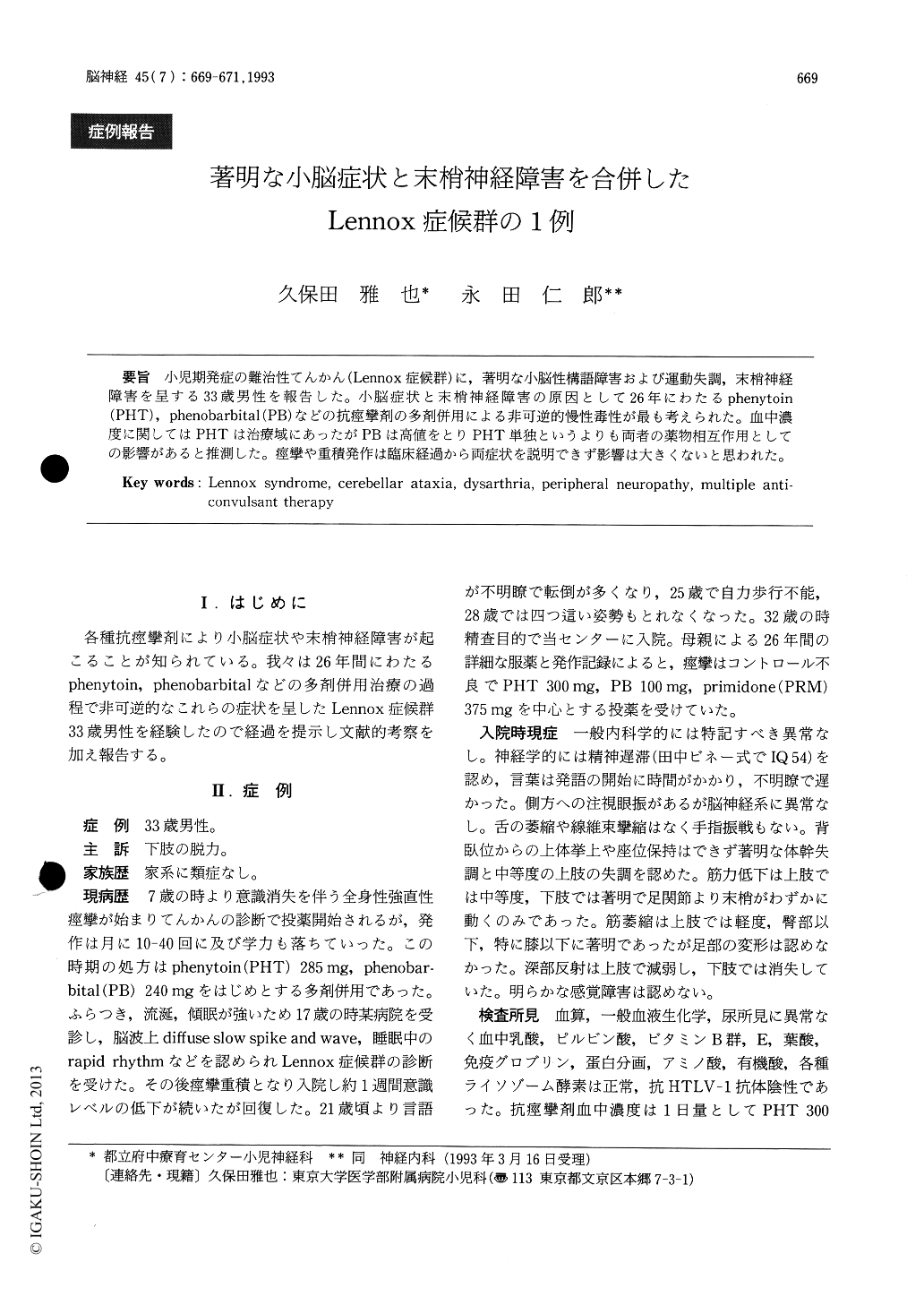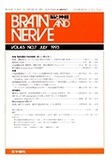Japanese
English
- 有料閲覧
- Abstract 文献概要
- 1ページ目 Look Inside
小児期発症の難治性てんかん(Lennox症候群)に,著明な小脳性構語障害および運動失調,末梢神経障害を呈する33歳男性を報告した。小脳症状と末梢神経障害の原因として26年にわたるphenytoin(PHT),phenobarbital(PB)などの抗痙攣剤の多剤併用による非可逆的慢性毒性が最も考えられた。血中濃度に関してはPHTは治療域にあったがPBは高値をとりPHT単独というよりも両者の薬物相互作用としての影響があると推測した。痙攣や重積発作は臨床経過から両症状を説明できず影響は大きくないと思われた。
We reported a 33-year-old man with Lennox syn-drome of 26 years' duration associated with unusual symptom complexes such as severe cerebellar atax-ia and dysarthria, and peripheral neuropathy. His convulsive disorder was very intractable despite multiple anticonvulsants including phenytoin (PHT) , phenobarbital (PB) , primidone (PRM) , valpro-ate and so on. At the age of 25 he was no longer able to walk without help. PHT blood levels were kept almost within the therapeutic range, while PB blood levels tended to be greater than the thera-peutic range.
Needle EMG study revealed denervation pattern. Motor conduction velocity of the peroneal nerve was 25.2 m/s and sensory conduction velocity of the sural nerve could not be elicited. Brain CT and MRI showed the marked cerebellar atrophy predominant in the vermis.
To our knowledge there were no previously report-ed cases of Lennox syndrome associated with such cerebellar dysfunctions and peripheral neuropathy. From the clinical course and laboratory findings, metabolic disorders and degenerative diseases were ruled out. We consider his cerebellar symptoms and peripheral neuropathy could be attributable to the long-term use of multiple antmiconvulsants, i. e. PHT in combination with PB and PRM. These symptoms seem to be irreversible, because our patient's condi-tion did not change after PHT and PB dose reduc-tion, and discontinuation of PRM.

Copyright © 1993, Igaku-Shoin Ltd. All rights reserved.


